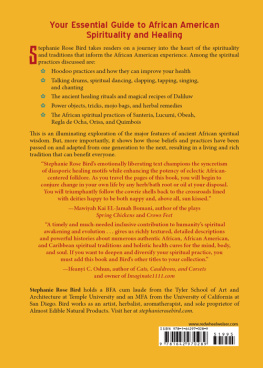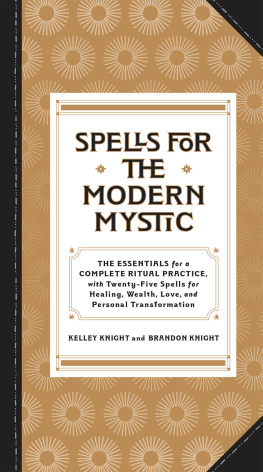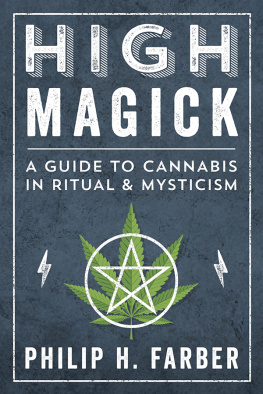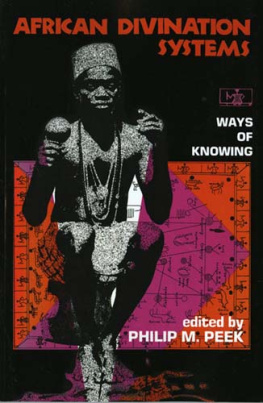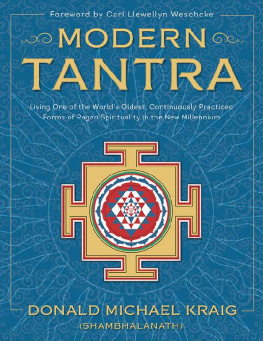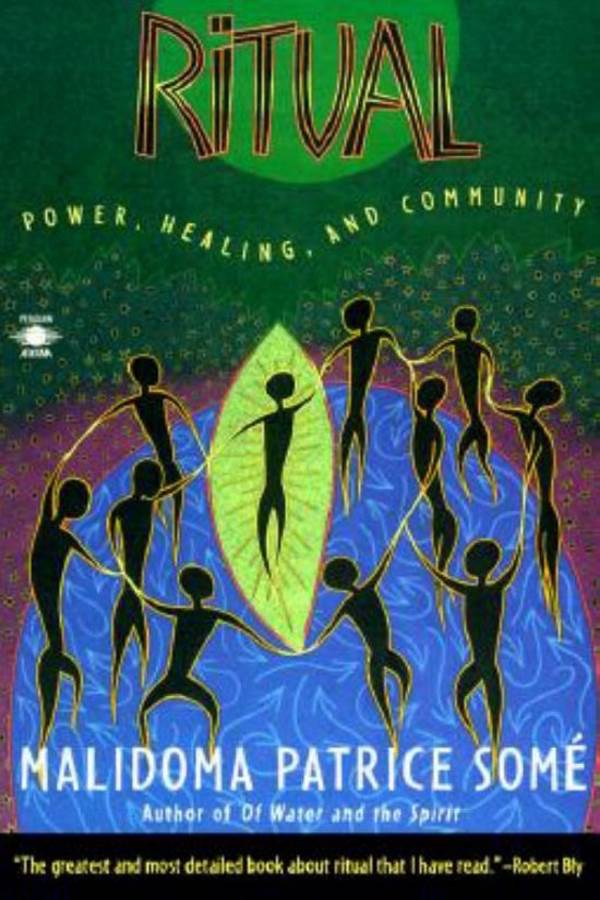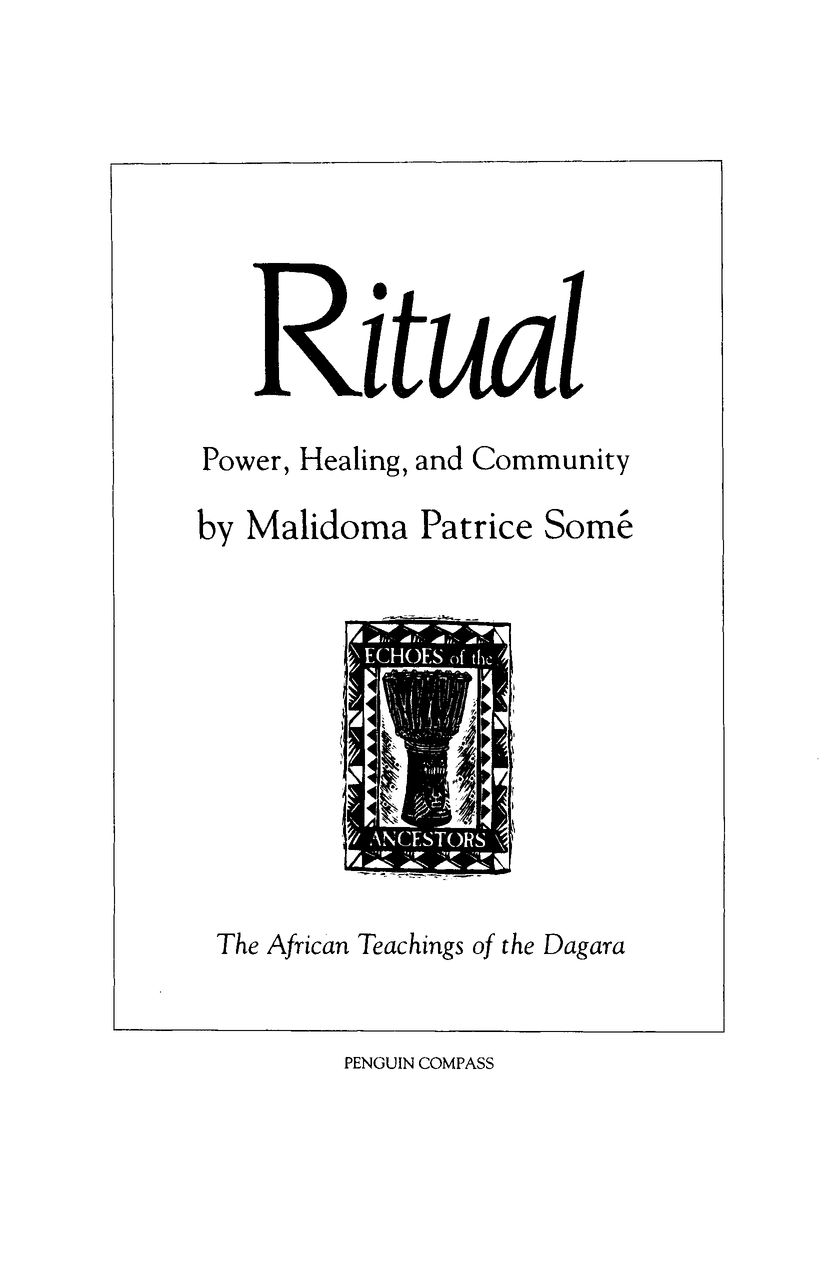Table of Contents
RITUAL
Malidoma Patrice Som is from the Dagara tribe of Burkina Faso, formerly Upper Volta, West Africa. Malidoma, in his native language, means be friend with the stranger. He is an initiated, gifted diviner and medicine man of his tribe. He holds three masters degrees and two doctorates from the Sorbonne and Brandeis University. His well-known book Of Water and the Spirit: Magic and Initiation in The Life of An African Shaman is treasured throughout the world. Today, Malidoma devotes part of his time to conducting intensive workshops with his wife Sobonfu. He is currently working on a new book.
ACKNOWLEDGMENTS
I give thanks to my own ancestors and to Grandfather Bakhy, who has maintained a stubborn energetic presence around me, my psyche and my consciousness. He has been persistently injecting me with words, the utterances of which have been very frightening to me, but nonetheless have had tremendous impact on the audiences that have heard them.
I am grateful to the Council of Initiation that ultimately made the decision to initiate me into becoming the kind of person I am. To all the people of my tribe, I am thankful whether they know me or not, it doesnt matter. For some reason, the more I talk about them, the more I believe in them, the more I can associate with them.
I am grateful to my father, for silently being the kind of support that I always find whenever I am unsure about where to go or what to do.
To all the men who have supported me spontaneously and equally with their trust and belief in the making of the very ritual I describe in this book, I am truly indebted. Without them I would have never known that there is way for one culture to relate to another culture.
I am grateful to Michael Meade for being the other tribal African man in a white skin, who through his actions and unspoken words unmistakably has guided me, encouraged me and showed me the way to reach out to men in this frightening white world.
To Robert Bly for being, in many ways, the kind of grandfather that I used to feel comfortable coming close to when I was a child, I honor with admiration and gratefulness.
Robert Moore, who appears to my eyes to be in this culture a man of great spirit, a boburo indeed, I embrace with gratitude.
To John Lee for the good things he says to me, and for having acknowledged and confirmed for me thoughts and feelings I was timid or hesitant in conveying things he suggested or triggered in my own mind by his remarks I express my thanks.
To James Hillman for his encouragement and support, I express my appreciation. It is his vision and determination that have helped me to move with greater ease within American culture. He has become for me a psychological touchstone to this rapidly changing modern world.
I am grateful again to all the people whom I dont know, who through their very explicit interest in who I am and what I am doing in this country, eventually encouraged me to go ahead and venture into this kind of written disclosure. To them I owe this book, and more.
Introduction
A first glimpse can capture an essential aspect of a person. I first saw Malidoma Som standing in the midst of travelers crowding through an international airport. It was easy to pick him out because his elaborate hat and embroidered cloak were the most commanding garments in sight. The impact of the tribal designs he wore was intensified by the contrast of modern slacks and shoes. The tribal garments display where Malidoma comes from and where his heart still resides. The slacks and shoes show that he is a purposeful traveler in the modern world.
Wearing ceremonial garments in public is not a random act. Rather, it is a ritual statement. The garments are a display of the intention of his tribe to continue to exist, even in the cacophony of the modern world. Malidoma and the Dagara people intend to continue, to weave and embroider life in the intricate way that has been passed to them from their ancestors. The Dagara are dedicated to weaving this world with the Otherworld. The skills of weaving the other world of spirits and visions into village life are the same skills Malidoma uses to make pathways between the tribal world and contemporary culture.
Airplanes appear amongst the traditional designs in Malidomas traveling cloak. Its one of the many surprises that occur around him. Literally and figuratively, he is wearing ancient and modern symbols entwined. His teachings and writings demonstrate a rare ability to introduce tribal wisdom to modern minds. The question is, can the modern world find ways to perceive the subtle knowledge and imagery of the tribal world? Can Western understanding open a place for tribal visions of spiritual life and community rituals to enter?
Malidoma is not a modern person interpreting village life. Hes an ancient person interpreting modern life to village elders and showing village ways to modern eyes. Malidoma carries a vision of the tribal world and is able to translate it into Western idioms. Ive seen him with a medicine bag made of hide and full of shells in one hand and a laptop computer in the other. He uses each to catch and express the movements of spirit in peoples and places. He is conversant in the languages of modern psychology and comparative literature as well as ancient mythology, healing and divination by shells. He is not the usual traveler, nor the usual observer of either tribal or modern ways. Malidoma is uniquely able to find meaningful pathways in the upheaval that is striking both the tribal world and modern states.
There is no apology in these writings for the reckless imagination, piercing intelligence and intuitive insights jostling in his diviners bag. There is no willingness to reduce the complexity and surprising nature of the old culture into forms that fit easily into Western beliefs and categories. In order to follow Malidoma into the tribal realm it is necessary to encounter the world of ritual anew. In order to cross the threshold, it is necessary to forego the sense that all mysteries can be explained if theres enough time to develop an explanation. It requires letting go of the idea that the world could be known in its entirety if there were just enough electrical wires strung across it. The electricity here comes from invisible wires strung across thresholds into the Otherworld of the ancestors.
Looking through this threshold requires rediscovering the imagination that the West attributes only to children and madmen. In the beginning of this book a child wakes in the night startled by a luminous goat studying the sleeping form of his sister. When his fright at this visitation awakens his father, the father sees the same image as the child. The visiting ghost, the visiting goat, is not reduced to a figment or fragment of the childs imagination. Parent and child both see the luminous visitor. The goat leaves a trail that leads through the whole tribe to death and the ancestors. The trouble caused by the goat begins a series of rituals that connect parent, child, grandparent and ancestors. All wind up on the same path attending to the threads of community that are threatened by the spirit in the goat. Everyone is tied one to another by a path of white ash. The rituals that relieve the trouble in the village open the doors to Malidomas insights into healing in modern societies.


